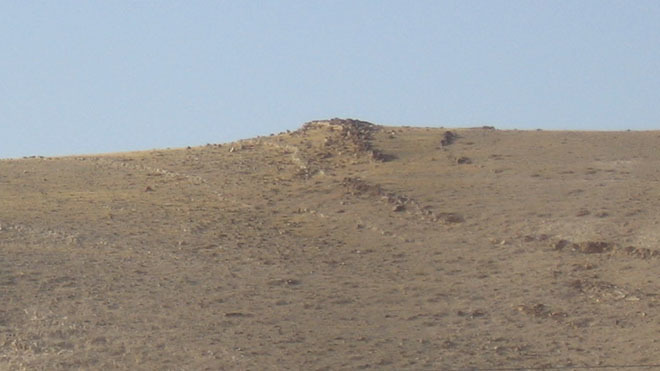The History of the Knife of Abraham
Apr. 22nd, 2017 06:42 pm
After we, with the help of geometric constructions based on the prophecy of Ezekiel, were able to accurately determine the location of the future altar of the Third Temple, and after we found on this very place something reminiscent of the ruins of the ancient altar, it is time to look into the details of the sacrifice of Abraham in the land of Moriah.

First, we determined the distance from Be'er Sheva to Jerusalem, because according to Judaic traditions, it was at Mount Moriah in Jerusalem that the sacrifice of Abraham, described in Genesis 22, was performed. And although the distance in a straight line from Be'er Sheva to Jerusalem is only 72 kilometers (45 mi), the actual route along the highway from Be'er Sheva to Jerusalem today is 100-112 kilometers (62-70 mi).
The average daily path of a person is 40 kilometers. The donkey also moves with the speed of a pedestrian, and it is unlikely that you can make it go more than 40 kilometers in one day.
According to the book of Genesis, Abraham set out early in the morning, and came to the place of sacrifice on the third day. In the remaining time he and his son were to build an altar, and then it was necessary to make a sacrifice before sunset. Therefore, we can assume that the entire journey of Abraham took just over two days. Go more than 100 kilometers to Jerusalem, he just would not have had time.
The distance from Be'er Sheva to the place we found in the Judean Desert is only 50 km (31 mi) in a straight line. If we take the same coefficient that we have by calculating the ratio of the distance along the line to the length of the actual path between Be'er Sheva and Jerusalem, then the real path from Be'er Sheva to the place we found in the Judean Desert is about 73 km (45 mi).
Given that in the time of Abraham the road could squirm more than the modern freeway, the real path of Abraham could be even greater, so the place we found is much more suitable as a possible place for Abraham's sacrifice than what the Jewish tradition tries to impose on us.
The second factor that could make the sacrifice of Abraham impossible at the site of the future threshing floor of Ornan the Jebusite is that there was a nearby city where people lived. It is strange to imagine that Abraham would have decided to sacrifice his son in public, before the eyes of the townspeople, who would certainly have gathered to look at this spectacle.
But the most important argument against the version of Jerusalem as a place of Abraham's sacrifice, is that the threshing floor of Ornan the Jebusite in the Bible called the threshing floor of Ornan the Jebusite, and not called the land of Moriah, and not called Jehovah-Jireh.
I want you to notice that in Genesis this place is called "the land of Moriah", and in 2 Chronicles the place where Solomon built the Temple is called "Mount Moriah".
( Read more... )